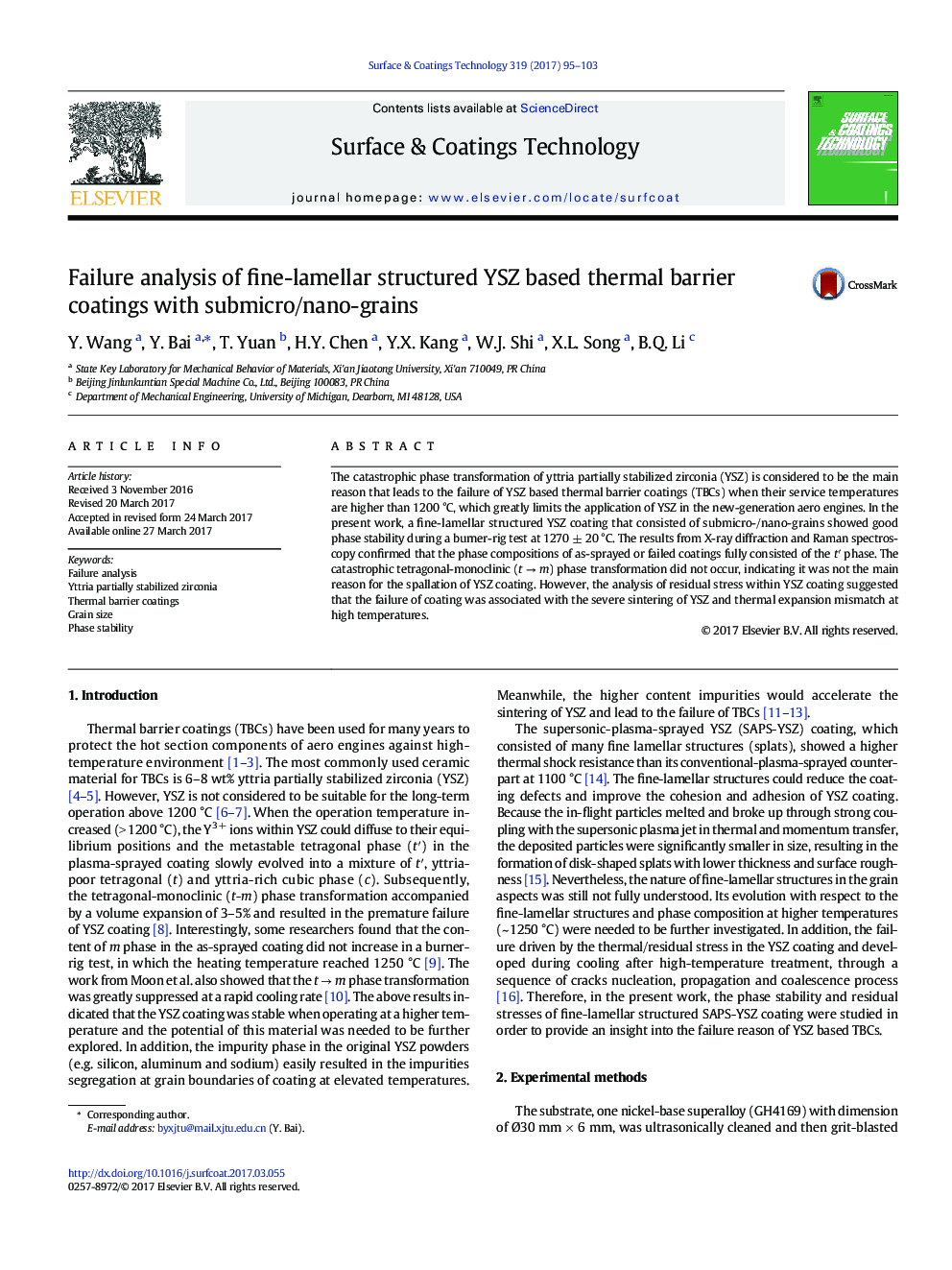| Article ID | Journal | Published Year | Pages | File Type |
|---|---|---|---|---|
| 5465373 | Surface and Coatings Technology | 2017 | 9 Pages |
Abstract
The catastrophic phase transformation of yttria partially stabilized zirconia (YSZ) is considered to be the main reason that leads to the failure of YSZ based thermal barrier coatings (TBCs) when their service temperatures are higher than 1200 °C, which greatly limits the application of YSZ in the new-generation aero engines. In the present work, a fine-lamellar structured YSZ coating that consisted of submicro-/nano-grains showed good phase stability during a burner-rig test at 1270 ± 20 °C. The results from X-ray diffraction and Raman spectroscopy confirmed that the phase compositions of as-sprayed or failed coatings fully consisted of the tâ² phase. The catastrophic tetragonal-monoclinic (t â m) phase transformation did not occur, indicating it was not the main reason for the spallation of YSZ coating. However, the analysis of residual stress within YSZ coating suggested that the failure of coating was associated with the severe sintering of YSZ and thermal expansion mismatch at high temperatures.
Keywords
Related Topics
Physical Sciences and Engineering
Materials Science
Nanotechnology
Authors
Y. Wang, Y. Bai, T. Yuan, H.Y. Chen, Y.X. Kang, W.J. Shi, X.L. Song, B.Q. Li,
